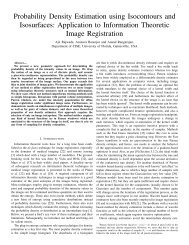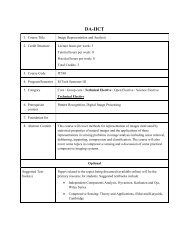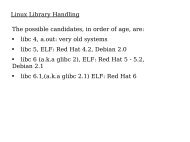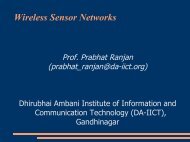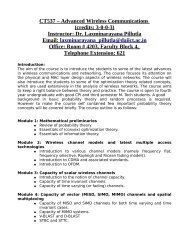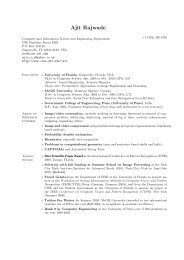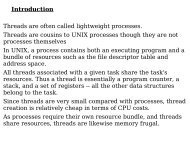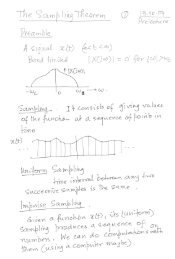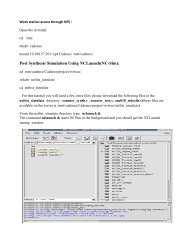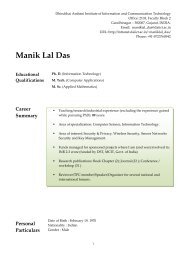View - DAIICT Intranet
View - DAIICT Intranet
View - DAIICT Intranet
You also want an ePaper? Increase the reach of your titles
YUMPU automatically turns print PDFs into web optimized ePapers that Google loves.
questions. The whole main corpus of the epic was therefore, be regarded as a<br />
dialogue between the king and the disciple of Vyasa.<br />
The first book contains two different introductions to Ugrasravas, each located at a<br />
different place. The narrative of Ugrasravas visit to ascetics in the Naimisa forests,<br />
with which the entire epic starts, is repeated at the beginning of the fourth<br />
subsection, Paulomaparva. Now, this passage is followed by verses in which seers<br />
asked the suta to tell his stories only in presence of their venerable chieftain Saunaka.<br />
On the arrival of latter the suta entered in a long talk with him.<br />
The Astikaparva starts with the Saunaka’s question as to why king Janamejaya<br />
resolved to annihilate all the serpents on earth and how Astika rescued them from<br />
danger of death in sacrificial burning. In response to these question, suta relates the<br />
sequence of events culminating in Janamejaya’s celebration of the snake sacrifice for<br />
the purpose of avenging the death of his father, as well as deeds of Astika, son born<br />
to a brahmin ascetic and a serpent princess, who finally succeeds in stopping the<br />
sacrifice by asking a boon from the king. Suta concludes it with statement that one<br />
who has recited or listened to Akhyana of Astika from its beginning shall nowhere<br />
encounter any danger from snakes.<br />
The text of Astika parva continues for further 10 verses. This text consists of dialogue<br />
between Saunaka and Ugrasrava. In this passage Saunaka first expresses his<br />
satisfaction having learnt the marvelous deeds of Astika and then wishes to hear<br />
Mahabharata from Ugrasrava. To this request Ugrasrava described Saunaka the<br />
circumstances in which Vyasa ordered his disciple Vaismpayana to recite the ancient<br />
Itihasa before king Janamejaya. And narration of Vaismpayana continued till the end<br />
of Mahabharata.<br />
Story-2<br />
The old king Dhritrashtra in the fifteenth year after the great battle retires from royal<br />
life into a forest, accompanied by his own wife, his brother’s wife, the widows of<br />
kaurava princes and passed their last years in fasting and penance till they meet their<br />
4



